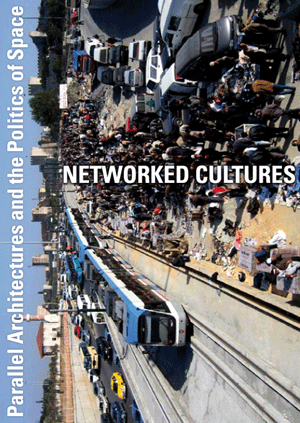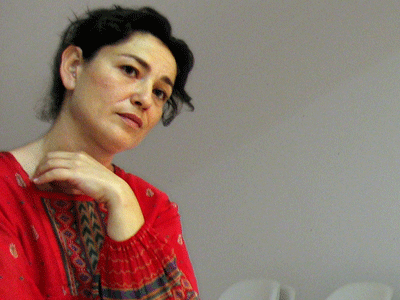_loginregistrieren_database_5 Factories - Worker Control in Venezuela Dario Azzellini & Oliver Ressler _ALMOSTREAL ECF _AnArchitektur Jesko Fezer _Arizona Road Azra Aksamija _Balkan Konsulat rotor _Bata-ville: We are not afraid of the future Nina Pope + Karen Guthrie / www.somewhere.org.uk _Black Benz Race krcf in collaboration with Felix Stalder, Arben Gecaj, Faton Topalli and Osman Osmani _Black Sea Files Ursula Biemann _Camp La Jolla Military ParkOwen Mundy _CHANGE REALITY: Renaming the Streets of Zagreb REINIGUNGSGESELLSCHAFT _Conceptual Paradise. There is a place for sophistication Stefan Roemer _de-regulation Irit Rogoff, Kutlug Ataman, Stefan Roemer_news ____________Bloomberg SPACE, London ____________Kumu Art Museum Tallinn ____________Open Space, Open Systems - Vienna ____________CAA 2011 Conference, New York ____________Forum Stadtpark, Graz ____________Symposium, Istanbul ____________lungomare, Bozen/Bolzano ____________Metropolis Biennale 2007-17, Copenhagen ____________new publication available now ____________Mestna Galerija, Ljubljana ____________Livestream of Networked Cultures documentary ____________ |
_ConversationsNatasa Illic
Nataša Ilić
PM/HM: You’re part of a collective of female curators with a very distinct agenda reflected in the group’s name What, How and for Whom. How does this relate to the conditions of working in Zagreb? Nataša Ilić: We – there are four of us – started our group in 1999. We’re curators and like to call ourselves a “curatorial collective”. The name of our collective is What, How and for Whom, which is abbreviated WHW. But we’ve always pronounced it “veh-hah-veh”, and this can be seen as a form of resistance to the English language. We started when the social situation in Croatia was finally beginning to change, after a long decade under a very right-wing government, in very isolated cultural and political circumstances, with a very oppressive atmosphere, and war, of course. So, in the late 1990s it finally felt possible to move about, to breathe, to do things. A number of non-governmental organisations had come into being earlier; they stemmed from the alternative cultural movement of the 1980s. Then in the 1990s, they all became involved in issues related to human rights, refugees, the war, and so on; yet they were in no way specifically involved in cultural production. There was a magazine called Arkzin that existed within the framework of the anti-war campaign. It was a network of thirty anti-war organisations from very different backgrounds. This magazine was probably the only platform in the 1990s for critical reflection on social reality. In 1998, it published a book for the 150th anniversary of the Communist Manifesto, and Slavoj Žižek wrote the preface. When the book was published nothing really happened: the newspapers didn’t mention it; evidently no one even dared to reflect on communism and our socialist past, not even through such a symbolic gesture. We were then asked to do a show: it was hoped that we would invite other artists and make some kind of cultural event out of it that would, in turn, bring about some reflection or reaction. We took the work extremely seriously; we started with a small, not very ambitious project with Croatian artists but then, as it developed, our ambitions grew. Also, the entire social situation changed over the next year and a half. Anyhow, in 2000, when we held the exhibition in collaboration with Arkzin, which still existed at the time, we did so with the net.cultural club MAMA and the Croatian Association of Artists, in this very official space for the visual arts. In the end the exhibition was called What, How and for Whom, and was now dedicated to the 152nd anniversary of the Communist Manifesto; approximately fifty artists from all around Europe participated. In addition we organised a number of other shows that presented works outside the main exhibition space. At the time it was also extremely important to set up lectures, roundtables and discussions: this was the first time cultural practitioners from Serbia and Bosnia were invited to the same show – and not only to exhibit but to discuss as well. We invited people like Frederic Jameson, Richard Barbrook, and Mark Terkessidis. So that’s the story of our first project and how we came together. The show turned out well not only because we were happy with how it looked, but also because a lot of people came to see it and there was talk of it internationally. In fact for years it was rumoured we were doing many things in Zagreb, but for a long time no one actually came to see anything – now the situation has changed. PM/HM: In light of Yugoslavia breaking up into a number of smaller entities, how do you perceive the scope of the cultural realm you’re working in now? How do you deal with this situation in which the local is clearly marked off and everything beyond it is immediately international? Nataša Ilić: How do we deal with this form of the local you’re implying we have? One in which we immediately become international and turn into something else as soon as we open the door? True, this is the case. I think for us, such international collaborations are extremely important for several reasons. For one, it has to do with the problems all post-communist countries face in certain respects and the fact that validation comes only from the West. So our internal position and positioning becomes important too; it’s hard for officials to dismiss us once we have good international contacts. This builds up our reputation in a way that would probably work differently if I tried to do the same thing in Germany, where it’s quite natural, if you run a space, to work both internationally and locally. But for us the local context is more important: all our projects are simply trying to address social urgencies. Such urgencies have, however, undergone transformation over the last six years, so that we now no longer call them urgencies, but normalisation. All our programmes in the past three years have evolved around the notion of normalisation, because society really has become normal. I mean, we are no longer experiencing the crisis we once had in common with certain fringe groups in Europe. PM/HM: The experience of crisis is often described as a testing ground for political imagination. Does this still apply to the current transition in Croatia, the transition from emergency and crisis to a phase of normalisation? Nataša Ilić: Not really. I’m afraid, in a general way, we’ve contributed to normalisation, and this is what has enabled us to take part in international contexts at times of urgency. Moreover, I don’t believe these times of crisis have led to more imagination. Though maybe what they have forced us to do – and this does not only apply to the 1990s but also to the socialist experiment in Yugoslavia – is to look at it all with much more appreciation than I remember our doing in the 1980s. Back then I was full of spite for the political gestures around me. What now interests me is the conceptual idea of ex-Yugoslavia, and not more. And this is so because I’m really distressed about our present political system; sometimes it seems to me that people in post-communist countries are more distressed than elsewhere. This has a positive side, because it makes many of us more critical – which means we don’t just take things at face value. And it’s one of the reasons why we don’t trust so-called normalisation. This has, among other things, to do with the fact that we’ve analysed it all and now see it as a mere lid under which everything suppressed is still brewing and waiting to explode. There was one particular project – originally entitled Normalisation and realised as a platform with both Istanbul and Sweden– where our initial idea was not just specific to the Croatian context. Rather it was related to the mix of welfare state in Sweden, and to Turkey’s desperate attempt to approach the European Union in a way that reminded us of post-war Croatia. Though the project could just as well have taken place somewhere else. As a matter of fact, there has been lots of talk of normalisation everywhere recently.
|
_broadcasts_conversations+ Ana Dzokic and Marc Neelen+ Ayreen Anastas and Rene Gabri + atelier d'architecture autogérée (aaa) + Asya Filippova + Sophie Hope and Sarah Carrington + Branca Curcic + Christoph Schaefer + Campement Urbain + Claudia Zanfi + Despoina Sevasti and Poka-Yio + Erden Kosova + Helmut Batista _textsRadio as Spatial Practiceby: Paulo Tavares Survival Kits: Artistic Responses to Globalizationby: Marga van Mechelen What Ever Happened to Cultural Democracy?by: Sophie Hope I don't know how to explain ...by: Anca Gyemant Trading Placesby: Peter Moertenboeck & Helge Mooshammer Milosevic as Architectby: Srdjan Jovanovic Weiss When the Unavoidable Knocks at the Door ...by: Gulsen Bal Tracing Translocality: The BlackBenz Raceby: Felix Stalder travelling lexicon towards a global positioning systemby: Celine Condorelli |
